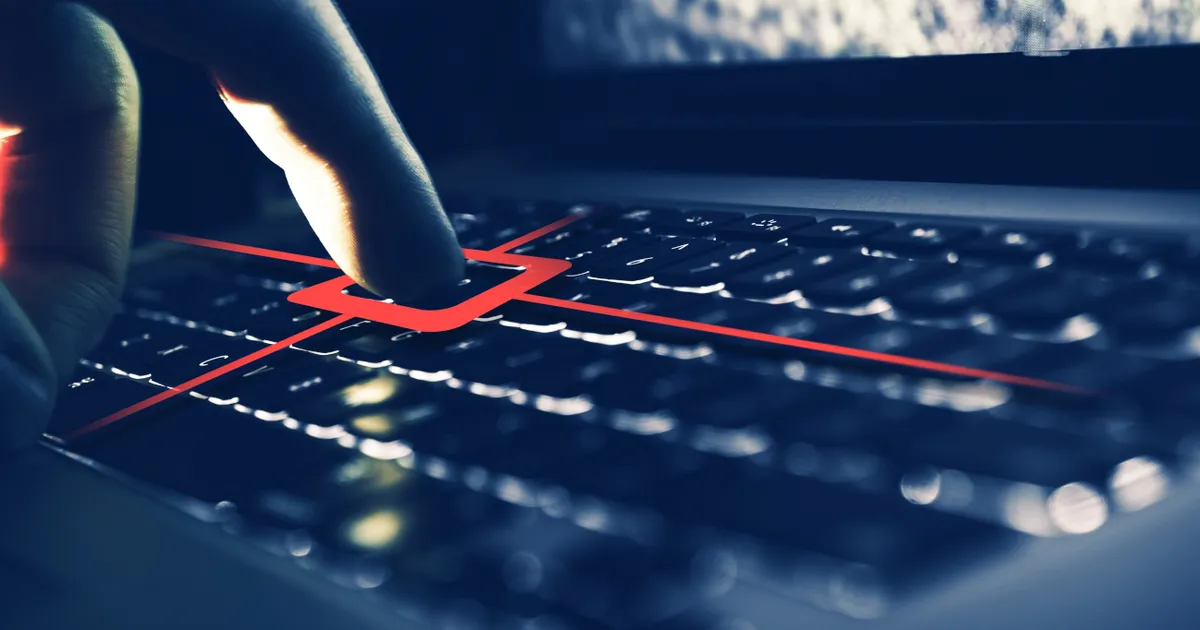Keystroke logging, also known as keylogging, is a stealthy surveillance threat that can be as dangerous as it is unsettling. Imagine a supervisor or a cybercriminal with the power to record and store a record of your keystrokes. As technology advances, so does the sophistication of these malicious and invasive tools. Fortunately, you aren’t entirely out of luck. With a comprehensive understanding of keystroke technology and the right tools, you can protect yourself and your data.
 Shutterstock: Virrage Images
Shutterstock: Virrage ImagesUnderstanding Keystroke Loggers
At their core, keystroke loggers operate as digital eavesdroppers.1 They are divided into two categories:
Hardware-Based Keyloggers
These are tangible devices discreetly attached between a computer’s keyboard and the main computer unit. Typically used in targeted attacks, these devices record keystrokes and store them for later retrieval. Their tangible nature means they can be detected through meticulous physical examination.
Software-Based Keyloggers
Far more insidious, these are software programs or malicious scripts installed stealthily onto a device. They can record keystrokes and send this data to cybercriminals in real-time or at scheduled intervals. Their digital nature makes them challenging to detect, often requiring specialized tools.
Detection Methods
There are steps you can take, and tools you can invest in to stay protected. Effective detection methods include:
Software Inspection
Regularly inspecting the programs running on your computer is crucial. Keyloggers often disguise themselves as benign software. By periodically checking the list of installed programs and processes, you might spot suspicious or unfamiliar names. Software like ‘Task Manager’ on Windows or ‘Activity Monitor’ on MacOS can be invaluable tools for this.
Anti-virus and Anti-malware Scans
These programs are specifically designed to detect, quarantine, and remove malicious software, including keyloggers. Schedule regular scans and ensure your software databases are always updated. Notably, some dedicated anti-keylogger software focuses primarily on these threats.
Unusual System Behavior
If your computer behaves strangely, such as sudden lags, unexpected pop-ups, or unfamiliar programs launching at start-up, it may be a sign of a keylogger or other malware.
Physical Inspection
Always keep an eye on your hardware. Hardware keyloggers can be a device connected between your keyboard and computer, like a USB or PS/2 connector. Periodically inspect your computer’s ports and connections to ensure no unfamiliar device is attached.
Removing Keystroke Loggers
So you detected the use of a keylogger. That’s the first step. Now, you’ll need to find a way to remove it from your system.2 That can be done in a number of ways, including:
- Use trusted anti-malware software: After detecting a potential keylogger on your system, employ a reputable anti-malware tool to quarantine and remove it. It’s recommended to run the scan in ‘Safe Mode’ to prevent the keylogger from interfering.
- Manual removal: If you’ve identified a suspicious program and are confident in your tech skills, you can navigate to the ‘Control Panel’ or ‘Settings’ and uninstall the program. Be cautious and ensure you’re removing the correct program to avoid system instability.
- Update and patch: Cyber attackers often exploit vulnerabilities in outdated software. Regularly updating your operating system and applications can prevent many keyloggers from ever gaining access.
- Disconnect and clean: In the case of hardware keyloggers, simply disconnecting the device will stop the logging. But be vigilant: ensure the data isn’t already compromised and always scan your system for any software loggers the device may have introduced.
Preventative Measures
The old adage, “Prevention is better than cure,” stands true even today. Here are some practices to keep keyloggers at bay:
- Regular backups: Always backup essential data. In case of a severe malware infection, you might need to reset or format your device.3
- Avoid suspicious downloads: Download software only from trusted sources. Be wary of email attachments from unknown senders and avoid clicking on dubious links.
- Use virtual keyboards: For entering sensitive information like passwords or credit card numbers, virtual keyboards can be a safer choice as they bypass physical keystrokes.
- Two-factor authentication (2FA): 2FA adds an extra layer of security, making it harder for cyber attackers to gain unauthorized access, even if they capture your primary credentials.
Learn More Today
Your digital footprint, if unprotected, can become a bullseye for cyber attackers. Keystroke loggers, being one of the tools in their arsenal, demand your attention and vigilance. By equipping yourself with knowledge and the right tools, you can effectively detect, remove, and prevent these stealthy threats.
As cyber threats continue to evolve, so should your strategies to stay protected. Remember, safeguarding your digital domain is an ongoing task. Keep exploring, stay updated, and never stop learning about ways to enhance your cybersecurity.